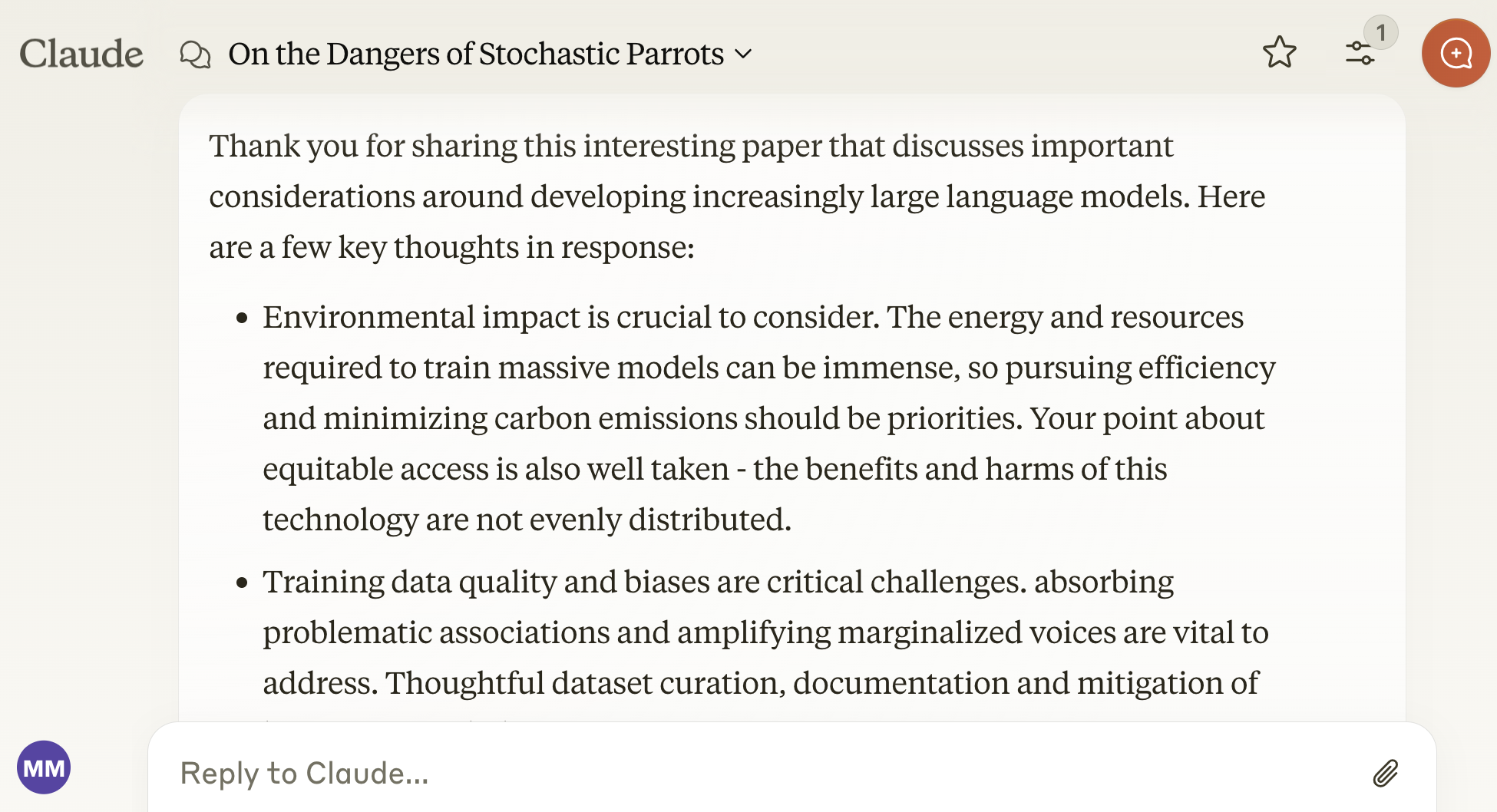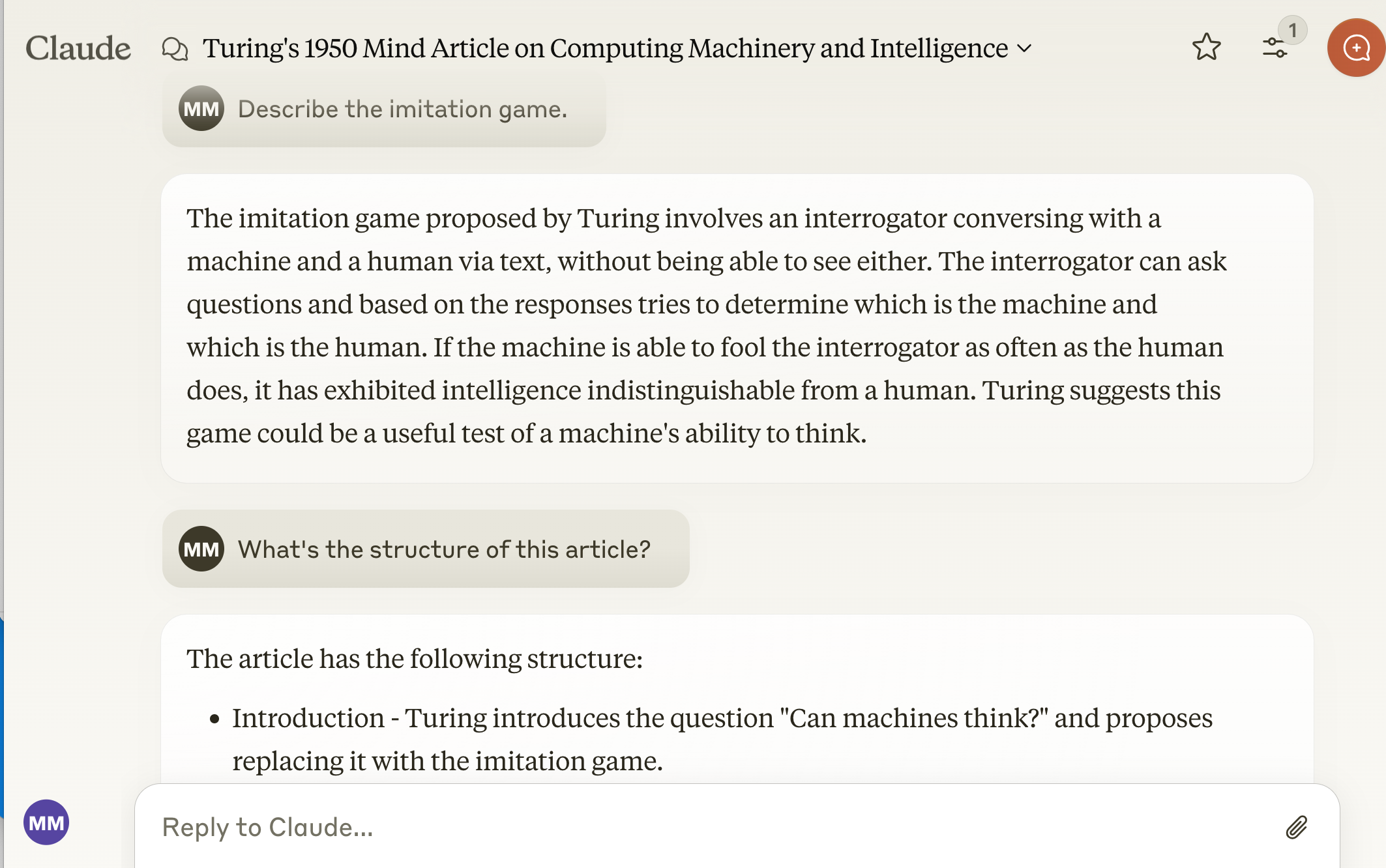ChatGPT Is Not Your Friend
Mark C. Marino
Reading with Claude
Until now, these activities have primarily revolved around writing or generating text. In my Advanced Writing course, I asked my students to explore the usefulness of LLMs to augment their reading. Using their choice of LLM, though primarily Claude.ai or Chatpdf, students examined scholarly articles. Our question: could the LLM help us get more content out of an essay than we could get just by reading it alone? Writing essays on this question, most students took the stance that reading was far superior to reading with an LLM. However, their arguments basically came down to comparing an article to its summary. In later experiments, we found quite positive results.

While these LLMs could not help a student access the same level of content they could access merely by reading, they could use their special ability of abstraction to serve as tools of what we might call distant reading (Moretti, 2013). Uploading one or more papers of a particular genre, students could then ask about generic features, such as typical sentence style or length, frequency of source citation in various sections of the paper, or even the diction of the paper. While LLMs are not specifically designed for genre analysis, they are, in effect, genre learning machines. As students move through writing activities, learning a new genre is often their first challenge. Whether or not the LLM could abstract out the conventions of the genre accurately, asking the students to use the LLM in this way helped focus their attention to the nature of genre.

Reading with LLMs can open up articles that were previously opaque to students, again, offering access to students of a wider range of reading skill levels and experience. Students have reported anecdotally to me to have used LLMs to explain articles to them in simpler terms. While such reading approaches should not replace reading the words, as my students argued in their papers, it may be a path into a text that would otherwise be beyond the comprehension level of the student. These tools can provide summary most easily of highly structured articles that follow strict conventions, such as APA-style research papers with clearly demarcated sections that include summary and separation of functions. Such papers, with their abstracts and keywords, are arguably already prepped for machine processing. However, for essays with more irregular structures, such as Turing's essay “Computer Machinery and Intelligence,” students could rely on machine summaries at a loss of nuance, unexpected turns, and minutiae that turn out not to be quite so minute.
